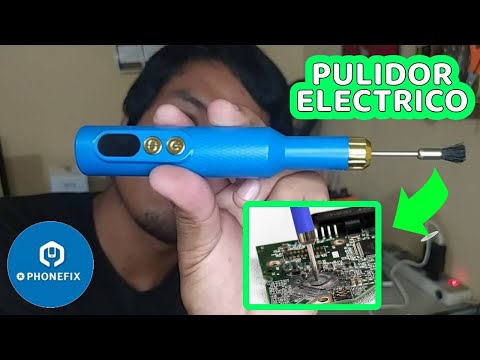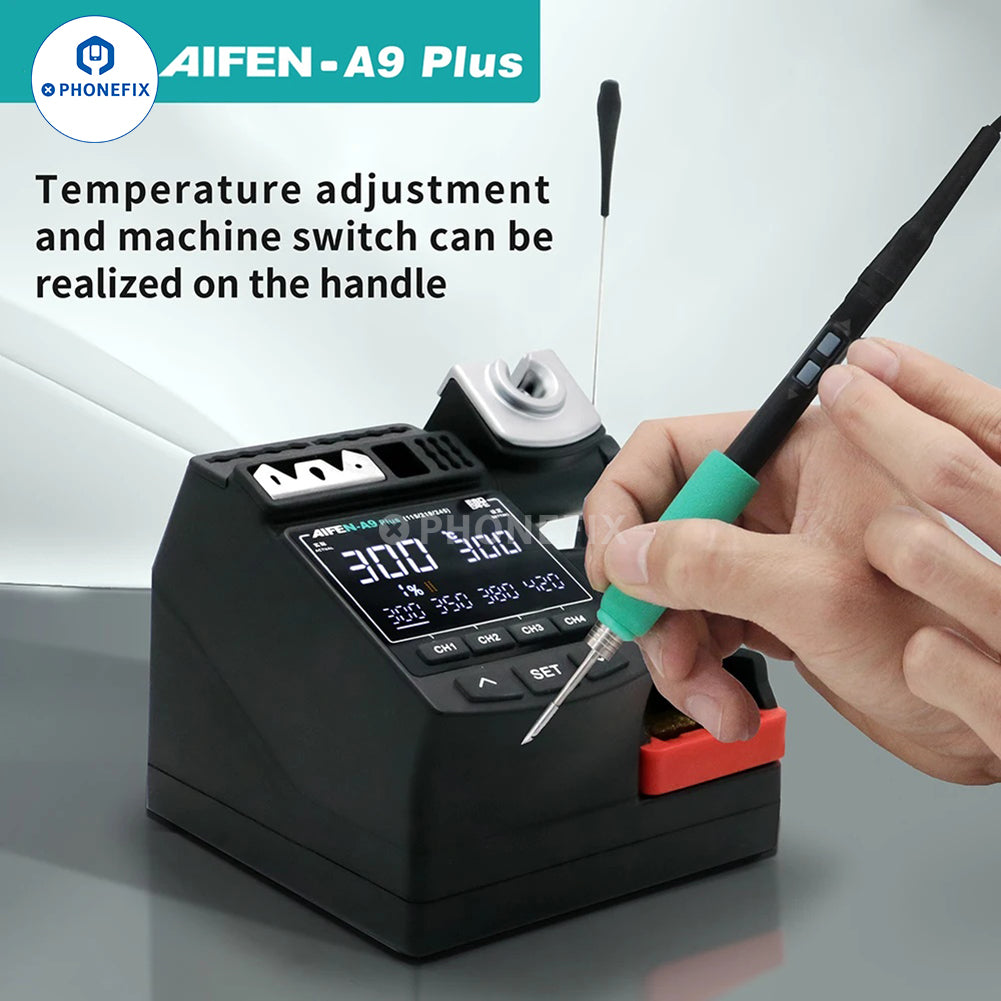Preheating platforms are essential tools for iPhone motherboard repair, offering precise and controlled heating to prevent damage to sensitive components. In tasks like desoldering, reballing, or replacing chips, sudden heat can warp the board or cause soldering defects. Preheating ensures the entire logic board reaches a stable temperature before applying additional heat, reducing risks during complex repairs.
2. Common Repair Issues Addressed by Preheating Platforms
2.1. PCB Warping and Heat Damage
Issue: Rapid or uneven heating causes the board to expand inconsistently, leading to warping, micro-cracks, or even internal circuit failure.
Solution: Preheating platforms provide uniform heat distribution, allowing the entire board to warm up gradually. This prevents thermal shock and maintains the board’s structural integrity.
Pro Tip: Preheat to 100-150°C before applying hot air to specific components for a safer desoldering process.
2.2. Cold Solder Joints
Issue: Inconsistent heating can prevent solder from fully melting, resulting in weak or unreliable connections known as cold joints.
Solution: Preheating ensures even temperature throughout the board, allowing the solder to flow smoothly and form strong, durable joints.
Tip: Maintain steady temperatures during reflow to avoid the need for repeated soldering, which could damage the PCB.
2.3. Overheating Sensitive Components
Issue: Chips, ICs, and connectors are susceptible to damage if exposed to excessive heat.
Solution: Preheating platforms offer precise temperature control, reducing the risk of overheating by gradually increasing the board’s temperature.
Best Practice: Monitor the temperature using sensors or thermometers to ensure delicate components aren’t subjected to thermal stress.
2.4. Component Shifting or Misalignment During Reflow
Issue: Using hot air guns without preheating may cause components to shift due to sudden air pressure or uneven heating.
Solution: Preheating stabilizes the board and ensures that components remain in place when additional heat is applied, reducing misalignment risks.
Tip: Secure the board on the platform using a mesh tray or fixture for added stability during reflow.
3. How to Properly Use a Preheating Platform for Optimal Results
3.1. Board Placement Techniques
Secure the board flat on the platform to avoid movement during heating.
Use fixtures or trays to stabilize the board, ensuring that all areas receive uniform heat.
3.2. Gradual Heating Process
Start heating at a low temperature and increase gradually to avoid thermal shock.
Preheat to 100-150°C for most phone boards, ensuring they are evenly warmed before applying focused heat with a hot air gun.
3.3. Temperature Calibration
Use infrared thermometers or built-in sensors to monitor the platform’s temperature accurately.
Adjust the temperature based on the type of board you are working on. For example, multilayer PCBs may require slower heating to prevent damage.
4. Maintenance Tips for Preheating Platforms
Regular Cleaning: Remove any flux residue from the platform surface after each use to ensure even heat transfer.
Temperature Sensor Calibration: Periodically calibrate the sensors to ensure accurate temperature readings.
Storage: Keep the preheating platform in a dust-free environment to avoid performance degradation. Cover the platform when not in use to prevent dust buildup on the heating surface.
5. A Must-Have Tool for Professional Repairs
Preheating platforms are indispensable tools for phone board repairs, helping technicians avoid common issues like PCB warping, cold solder joints, and overheating. With features like uniform heating, precise temperature control, and improved stability, these platforms enhance repair quality and reduce the need for rework. For professional results, investing in a high-quality preheating platform ensures safer and more efficient repairs from reliable phone repair tools seller China Phonefix, making it a crucial tool in any technician’s toolkit.
Preventing Common Repair Issues with Preheating Platforms
Diyfixtool Ci
Popular posts
-
 How to Slove with Charging Paused Battery Temperature too Low?Battery TemperatureSep 16, 2024
How to Slove with Charging Paused Battery Temperature too Low?Battery TemperatureSep 16, 2024 -
 How to Resolve iPhone Non-Genuine Battery Pop-up with i2C KC02S?Battery Pop-upMar 06, 2024
How to Resolve iPhone Non-Genuine Battery Pop-up with i2C KC02S?Battery Pop-upMar 06, 2024 -

-
 7 Ways To Fix Charging Stopped Phone Temperature Is Too LowCharging IssueMay 20, 2022
7 Ways To Fix Charging Stopped Phone Temperature Is Too LowCharging IssueMay 20, 2022 -
 Cell Phone Repair Technician's Workstation Setup Ideas & ToolsPhone Repair BusinessDec 23, 2023
Cell Phone Repair Technician's Workstation Setup Ideas & ToolsPhone Repair BusinessDec 23, 2023
PHONEFIX HOT SALE


PHONEFIX
PHONEFIX Polish Grinding Pen PCB Board BGA Chip Removing Repair
Sale priceFrom $0.99 USD
Regular price$2.59 USD
In stock

PHONEFIX
AIFEN A9 Plus Digital Display Soldering Station With T210/245/115 Handle
Sale priceFrom $75.55 USD
Regular price$86.99 USD
In stock

PHONEFIX
188W GaN Charger Phones Laptops PD3.1 Fast Charging Station
Sale price$35.99 USD
Regular price$38.99 USD
In stock





